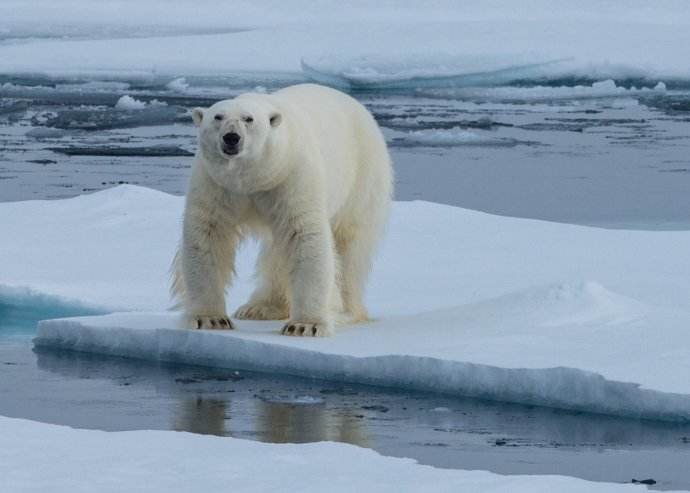(单词翻译:单击)
听力文本
This is Scientific American — 60-Second Science. I'm Emily Schwing.
Polar Bears spend most of their time roaming the sea ice in search of seals. And seals spend most of their time underneath that ice, avoiding the top predator. But climate change is giving polar bears additional challenges in their searches for food.
"Sea ice is now drifting faster." George Durner is a research zoologist with the United States Geological Survey Polar Bear Research Program. He and colleagues compared sea ice conditions from 1987–1998 with those from 1999 to 2013.
"And what we found was ice drift at the locations used by polar bears increased 30% in the Beaufort sea and 37% in the Chukchi sea." That's a problem because polar bears are homebodies—they prefer to stay in a specific range.

"Throughout their range, they seem to have a sense of place. And...here we have a situation where the general pattern of ice drift is westward, so to remain in your traditional range, it means you have to constantly be walking eastward to compensate for that westward drift."
The result: a large-scale polar bear treadmill. And all that walking requires extra fuel. On average, a single bear eats between 31 and 33 seals per year. But the metabolic consequence of the treadmill effect means they have to eat on average one to three more. The study is in the journal Global Change Biology.
And not only is the ice drifting faster—it's also melting more, giving the bears less of the platform they use to pursue their prey. So they need more seals but have a tougher time tracking them. All of which puts polar bears on a slippery slope.
Thanks for listening the Scientific American — 60-Second Science Science. I'm Emily Schwing.
参考译文
这里是科学美国人——60秒科学。我是埃米莉·施温。
北极熊大部分时间都漫步在海冰上寻找海豹。而海豹大部分时间都呆在海冰下,躲避冰上的捕食者。但气候变化给北极熊的捕食带来了额外的挑战。
“现在海冰漂得更快了。”美国地质调查局北极熊研究项目组的研究动物学家乔治·杜尔纳说到。他和同事将1987年至1998年的海冰状况与1999年至2013年的海冰状况进行了对比。
“我们发现,在波弗特海和楚科奇海,北极熊所用海冰的漂移速度分别增加了30%和37%。”这是一个问题,因为北极熊是居家一族,它们喜欢待在特定的范围内。
“在它们的活动范围内,它们似乎会有一种地方感。但是现在的情况是,总的来说浮冰在向西移动,所以如果要留在原来的范围内,那北极熊就必须不断向东移动,以抵销浮冰向西漂移的运动。”
结果是:大批北极熊徒步迁徙。而这种迁徙需要额外的能量。平均来说,一只北极熊每年会吃掉31到33只海豹。但额外行走导致新陈代谢加快,它们不得不每年平均多吃1到3只海豹。这项研究结果发表在《全球变化生物学》期刊上。
不仅是海冰漂移速度越来越快,而且海冰的融化量也增加了,这使北极熊用来捕食的平台越来越少。因此,北极熊需要吃更多的海豹,可是追捕海豹的过程却变得更加困难。这一切让北极熊的生存处境越来越糟。
谢谢大家收听科学美国人——60秒科学。我是埃米莉·施温。
译文为可可英语翻译,未经授权请勿转载!
重点讲解
重点讲解:
1. in search of 寻找;寻求;
例句:He has had to travel the country in search of work.
他不得不走遍全国寻找工作。
2. compare with 比较;对比;
例句:If you compare Duff's work with Tom's you will find many differences.
如果你把达夫的作品和汤姆的相比较,你会发现有许多区别
3. prefer to do sth. 更喜欢;偏好;
例句:Airlines would prefer to update rather than retrain crews.
航空公司更愿意换新员工而不是对旧员工重新进行培训。
4. on average 平均起来;按平均值;
例句:American shares rose, on average, by 38%.
美国股票价格平均上涨了38%。


